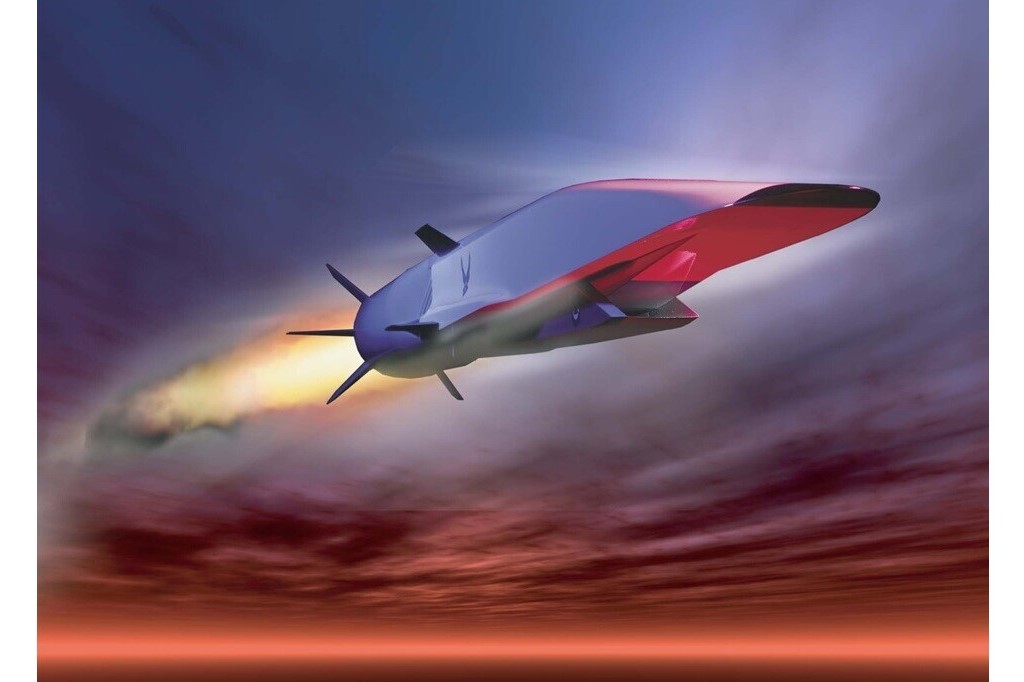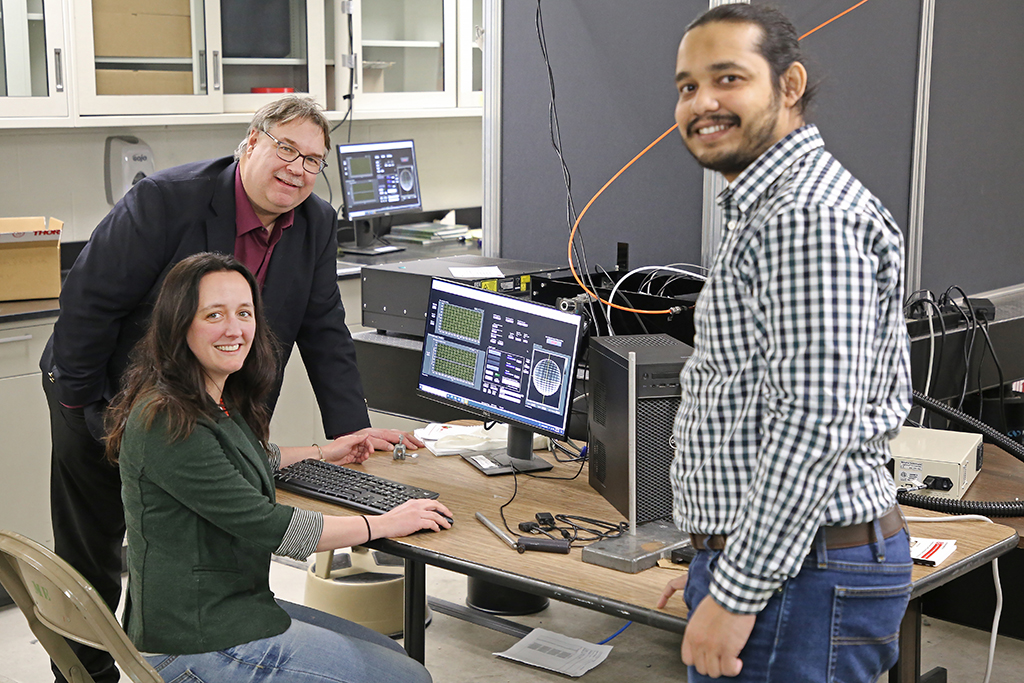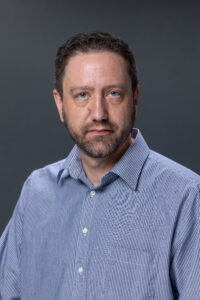UND research on hypersonic vehicles picks up speed
UND, Purdue collaborate on research to improve safety and tracking of hypersonic vehicles

What are the implications of the interaction between hypersonic vehicles travelling through the atmosphere and the ice crystals that naturally form there? A pair of UND researchers have received a federal grant to study that interaction, and their results could impact the design and improve the safety of hypersonic vehicles.
Hallie Chelmo, assistant professor of Mechanical Engineering, and David Delene, research professor of Atmospheric Sciences, have been awarded $750,000 from the Office of Naval Research to study how ice crystals form in the atmosphere and how they impact hypersonic vehicles. The term “hypersonic” means flight at a speed faster than five times the speed of sound, and such vehicles include certain missiles, military vehicles, and spacecraft reentering earth’s atmosphere.
The UND researchers are joined in the project by Joseph Jewell, an assistant professor in the School of Aeronautics and Astronautics at Purdue University. Chelmo is the Principal Investigator on the project, and Delene and Jewell are working as Co-Principal Investigators.
Brian Tande, dean of the UND College of Engineering and Mines, praised Chelmo’s leadership of the collaborative research project, which is happening alongside national security and space research at UND.
“Dr. Chelmo’s unique expertise and capabilities are already making significant contributions to the research mission of our College and to UND’s National Security Initiative,” Tande said. “This project is a very important part of our growing portfolio of work studying hypersonics, an area critical to our national security. Dr. Chelmo has assembled a very strong team of collaborators and I’m certain that this project will be the first of many.”
Chelmo said there is much that researchers have yet to learn about atmospheric water in all phases, especially ice. Impacts with atmospheric ice particles can potentially cause damage to a craft’s thermal protective systems.
Chelmo praised the interdisciplinary nature of the research, which will also be used to improve computer models used to track the trajectories of vehicles reentering the atmosphere from space.
“As space activity increases and we demand faster modes of human transport, we must understand how these high-speed vehicles interact with the atmosphere, for instance, to inform any restrictions on landing opportunities from outer space,” Chelmo said. “This interdisciplinary initiative bridges scientific techniques to understand atmospheric ice interactions with hypersonic flows, which are two separate specialties.”

Delene said the project is important because it will make use of novel laboratory methods to understand the implications of large, chain-like ice crystal aggregates on supersonic flight. Delene has observed such aggregates through his previous research.
“I am very excited to be involved with this project as it has the potential of producing truly revolutionary results, compared to simply making gradual advancements that are typical of most research projects,” Delene said.
The research, titled “Investigating the Formation of Ice Crystal Aggregates and Their Impacts on Hypersonic Vehicles,” has three objectives. In the first objective, the researchers will use laboratory equipment at UND to simulate a cloud-like environment so they can better understand the formation of atmospheric ice crystals. That knowledge will inform them on how to improve flight path trajectories for hypersonic vehicles.
The second objective will see how those ice crystals interact with shockwaves, which are caused by a vehicle travelling faster than Mach 1. This objective will be undertaken at Purdue University and will make use of laboratory technology there to see how these crystals break up in aggregate. This series of tests will yield information needed to determine the extent to which ice particles can affect hypersonic trajectories and damage potential.
The third objective will see the researchers interface with experts performing related studies. Their data will be used to validate ongoing theoretical work.
Jewell said he is pleased that the Office of Naval Research saw the potential in pairing the research capabilities found at UND and Purdue.
“I’m particularly excited about this project because it’s an example of my favorite kind of collaboration: something really new that neither partner could execute on our own,” Jewell said. “Dr. Chelmo at UND has some unique capabilities in generating and characterizing ice crystals, droplets, and other forms of water that occur in the atmosphere. I’m pleased that ONR saw the same potential that we did for pairing these UND strengths with our shock tube and other hypersonic test capabilities at Purdue.”
Chelmo said there are computational researchers across the country that are looking at the physics of what is going on inside the shockwave next to a hypersonic vehicle, but they do not have the needed experimental data for their research. This is something she intends to soon remedy.
“That is exactly what we’re developing,” Chelmo said. “We’re developing new methods to fundamentally understand shockwave-particle interactions, and we’ll give that data to the computational researchers.”



